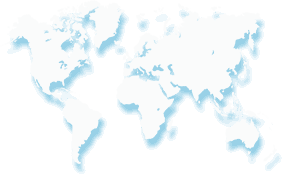WaterProfessionals® has over 38 years of problem-solving experience in the water treatment industry. Our water treatment experts have the knowledge and expertise to specify water treatment solutions for a variety of industries, and we are ready to put that expertise to use for you!
Have an industrial water purification or question you need answered immediately?
For immediate assistance from a personal representative, please call: 800-999-4195.
You can also send your inquiry through our >contact form and we will respond to your request within two business days or less. Personal information, questions and answers sent through our contact form will remain private.
Frequently Asked Industrial Water Treatment Questions:
Q. Which type of filtration media is best suited for industrial water treatment?
A. The type of filtration media needed will largely depend on what needs to be eliminated from the water. For removing standard chemicals such as chlorine, a simple granular activated carbon filter can resolve the issue. For hard water, scale, and deposits, a water softener will be required. For the removal of iron deposits or sediment, oxidation coupled with depth or multimedia filtration will work best. If bacteria or viruses are of concern, a membrane system (e.g., reverse osmosis, nanofiltration or micro filtration) plus UV sterilization and submicron filtration may be specified.
Q. What is the best water treatment method for boiler feed water?
A. There are two primary methods used for the treatment of boiler feed water: 1) chemical water treatment methods; and 2) industrial water treatment equipment methods. The level of treatment needed will depend on several factors, such as the operating pressure of the boiler, and the specific raw water used. Calcium carbonate scale formation is often a problem in low pressure boilers. High pressure boilers require high purity demineralized water, as even very low levels of contaminants can cause deposits and corrosion inside the boiler and condensate systems. Filtration, softening, reverse osmosis and / or demineralization can produce the water quality recommended by boiler manufacturers. An added benefit of RO or demineralizer water treatment is that they both reduce the chemicals needed to treat the boiler feedwater and supply a consistent level of water quality.
Q. What kind of maintenance is required for an industrial reverse osmosis system?
A. If the feedwater is properly treated upstream of the reverse osmosis system, maintenance is generally minimal. RO membranes are susceptible to destruction by chlorine, so pretreatment generally includes either feeding a reducing agent like sodium bisulfite or use of activated carbon filters to achieve dechlorination (i.e. elimination of free chlorine). To prevent scaling, ion exchange softening may be required to reduce calcium and magnesium carbonates, or metering an antiscalent into the feedwater. Multi-media filtration may be required if the water contains significant silt. With pretreatment properly applied, reverse osmosis membranes may require cleaning semi -annually or annually and replaced each 3 – 7 years.
Q. What temperature should my water be when following through an industrial reverse osmosis system?
A. Since water density varies markedly with temperature, warm water (e.g. 77° Fahrenheit) will flow much faster through a membrane than water of 40° Fahrenheit (the flowrate at various temperatures is widely available from manufacturers and is referred to as “flux rate” of the membrane). Most manufacturers list their design specifications based on 77° F water. Reverse osmosis units must be sized based on flow demand and the coldest feedwater temperature. Larger RO machines often are equipped with a VFD-controlled pump so RO output can be maintained at the specified flowrate given a wide band of feedwater temperature.
Q. What are the limitations of activated carbon filters?
A. Activated carbon filtration is effective in removing by adsorption contaminants that have relatively large molecules (most organic chemicals) and catalyzing the reduction of free chlorine. Activated carbon filtration does not remove microbes or reduce dissolved minerals such as sodium, nitrates, fluoride, and hardness.
Q. What is the ideal flow rate for a greensand filter?
A. Greensand filters are typically designed to flow at 3-5 gpm per square foot of filter surface area and need a minimum of 12 gpm per square foot for backwash.
Q. What is the difference between ion exchange and deionization?
A. Ion exchange and deionization are often used synonymously to refer to the same process. However deionization may be accomplished by technologies other than ion exchange (e.g. reverse osmosis). Ion exchange is a process used extensively in nuclear facilities, industrial processes and medical and pharmaceutical operations to control the purity and pH of water by removing undesirable ions and replacing them with acceptable ones.

